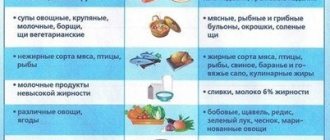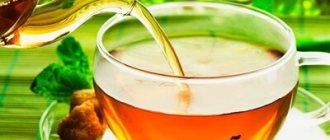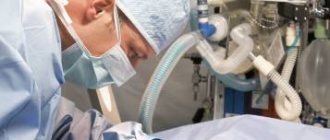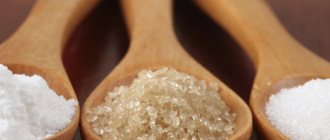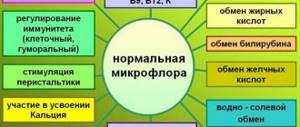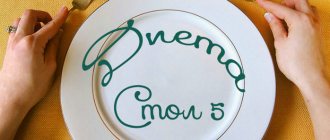Inflammation of the pancreas is a dangerous disease characterized by severe pain, vomiting, nausea, diarrhea, and flatulence. For pancreatitis, the doctor prescribes the patient a strict diet, and sometimes long-term therapeutic fasting. This is a real test for someone who is used to eating tasty, satisfying food and without limiting himself in anything. The diet for inflammation of the pancreas additionally includes drinking alkaline mineral water.
Pancreas
What function does the pancreas perform in our body? First of all, it takes part in the digestion process, while secreting certain enzymes for certain food products: for fats - lipase, for proteins - trypsin, for carbohydrates - amylase.
In addition, the pancreas also regulates the balance of glucose in the blood by producing insulin and glucagon.
Pancreatitis
Before considering a diet for inflammation of the pancreas, it is also necessary to familiarize yourself with the features of this disease. When a person eats properly, the number of enzymes secreted by the pancreas is within normal limits. But if the diet is disrupted, and the person abuses alcohol and smoking, the pancreas begins to become inflamed. Enzymes that are retained in the ducts of the organ destroy the pancreas itself. Penetrating into the blood, these enzymes provoke the development of intoxication of the body. This condition of the pancreas is called pancreatitis.
Diagnosis of pancreatitis
Blood tests may show an increase in the number of white blood cells and other signs of inflammation. During an exacerbation, changes in the pancreas are detected through x-rays, ultrasound and an ultrasound scanner. The scanner provides valuable information about the size and structure of the pancreas, the presence of bleeding and various painful changes.
When a diagnosis of acute pancreatitis is made, amylase in the blood is examined. When it is enlarged, such a diagnosis is made. Chronic pancreatitis is detected by endoscopic retrograde cholangiopancreatography. This is a test in which a thin, flexible tube is inserted into the stomach through the mouth.
Symptoms of pancreatitis
Before you start a diet for inflammation of the pancreas, you should diagnose this disease. Pancreatitis can be identified by the following symptoms:
- Painful sensations. The appearance of intense pain causes cutting sensations. If a person is not given timely assistance and the pain is not eliminated, then this condition may reach the point of painful shock. Depending on the affected area, it may hurt on the left or right in the hypochondrium. If the entire pancreas is inflamed, the pain will be of a shingling nature.
- Change in skin tone on the face. First, the skin on the face begins to turn white, and then it acquires a grayish tint.
- The appearance of a rash on human skin.
- Abnormal stool. It should be noted that a patient may experience both diarrhea and constipation due to inflammation of the pancreas.
- The appearance of nausea and vomiting.
- Severe bloating.
- Cardiopalmus. In parallel with this, shortness of breath may also appear.
- Blue spots may form in the navel area and lower back. This indicates that blood from the inflamed pancreas has entered the skin of the abdomen.
- High or low blood pressure.
- Increased body temperature.
Therapeutic diet during exacerbation of pancreatitis
As soon as an exacerbation of chronic pancreatitis begins, the patient feels severe pain, as tissues swell and cells are damaged. The pain is spreading throughout the body, as well as a pronounced dyspeptic syndrome , which is related to disruption of food digestion. If you go on a diet at this time, you can create a favorable atmosphere for the whole body. To do this, you need to adhere to table 0 according to Pevzner, which excludes the possibility of eating any food. The patient is allowed to drink only water.
Doctors prescribe drug therapy that relieves the causes of exacerbation of the disease, so the diet must be followed for a couple of days. If it is necessary to follow a diet for more than the prescribed time, then doctors prescribe parenteral nutrition, consisting of intravenous administration of glucose, vitamins and amino acids.
What is allowed to eat?
Now let’s get down to the specifics of the diet for inflammation of the pancreas. What is allowed to eat with pancreatitis? First of all, experts recommend eating stewed, boiled or steamed dishes. In order for food to be quickly absorbed, it must be consumed in liquid form or crushed using a blender. At the same time, the diet must include vegetables, which contain pectin and fiber. The fact is that these products can normalize the activity of the gastrointestinal tract and restore intestinal motility. Vitamins that are part of fresh vegetables and fruits boost the immune system and also speed up the patient’s recovery. What will the diet be like? The menu for inflammation of the pancreas must include the following products:
- Carrot.
- Tomatoes.
- Strawberry.
- Patissons.
- Raspberries.
- Various cereals, whole grains.
- Fermented milk products, but with a low percentage of fat.
In addition, it is recommended to eat salads with plenty of greens on a daily basis. They need to be seasoned with vegetable oil. For this, flaxseed or sesame is used.
The most popular diets and nutrition systems for patients with pancreatitis
Depending on the form of the disease, the patient is prescribed a diet with clearly defined restrictions and a list of permitted foods. When determining the nutritional system, anamnesis, the body’s reaction to certain food groups and the presence of concomitant diseases are taken into account. Pancreatitis rarely develops as an independent disease. Most patients suffer from gastritis, ulcers, hepatitis, cholelithiasis, etc. This factor must also be taken into account when designing a nutrition system.
Since 1920, the most advanced nutrition system has been considered the system of the therapist Pevzner. The doctor has developed 15 table options for patients suffering from diseases of the intestines, stomach, pancreas, etc. The diet number indicates a specific diet, consisting of a specific list of dishes. Each group of diseases has its own “table”. For example, for cardiac diseases, patients are prescribed Diet 10, and for kidney problems - No. 7.
The correspondence between the table number and the disease is displayed in a special table:
| Table No. 1 | Ulcers and problems with the duodenum |
| Table No. 2 | Gastritis and colitis |
| Table No. 3 | Intestinal diseases, gastritis |
| Table No. 4 | Intestinal diseases, diarrhea |
| Table No. 5 | Chronic diseases of the liver, gallbladder and ducts |
| Table No. 5a | Acute diseases of the liver, gall bladder and ducts |
| Table No. 5p | Pancreatitis |
| Table No. 6 | Gout, urolithiasis |
| Table No. 7 | Chronic kidney disease |
| Table No. 8 | Obesity |
| Table No. 9 | Diabetes |
| Table No. 10 | Cardiovascular diseases |
| Table No. 11 | Tuberculosis |
| Table No. 12 | Nervous system dysfunction |
| Table No. 13 | Acute infectious diseases |
| Table No. 14 | Urolithiasis disease |
| Table No. 15 | General |
Recipes for dishes for each table are freely available on the Internet. Only a doctor can determine which diet is suitable for a patient after conducting the necessary research.
Diet No. 1 (table 1)
Prescribed to patients with gastrointestinal problems. You can start the diet two weeks after an acute pain attack. The doctor changes the therapeutic diet only 5 months after achieving stable remission.
Diet No. 1 puts forward the following requirements for the patient:
- eating foods that are native to one’s area;
- increasing daily calorie content to 2800 kcal (proteins - 100 g, fats - 100 g, carbohydrates - 400 g).
High calorie foods can negatively affect weight, so you need to add physical activity.
A diet for pancreatitis and gastritis allows you to consume the following list of products:
- yesterday's wheat bread;
- liquid porridge in grated form;
- pureed lean vegetable soups;
- boiled vegetables, fruits, dishes made from them with added sugar;
- homemade sauces without adding hot, salty seasonings;
- fresh dairy products;
- mashed potatoes;
- lean types of fish and meat;
Delicious diet No. 1 offers the following menu:
| Breakfast | omelette, cocoa |
| Snack | baked apple |
| Dinner | mashed potatoes, vegetable soup, chicken breast |
| Snack | glass of warm milk, crackers |
| Dinner | boiled pike perch, vegetable mixture |
The combination of tables No. 1, No. 5p is an excellent diet for duodenitis and pancreatitis.
Table No. 3
Diet for pancreatitis with constipation, but you should be careful with large amounts of fiber and bran, which provoke painful attacks. Diet 3 is based on eating soft, liquid foods low in starch and animal protein. The patient's portions should be small - no more than 200 g.
The nutrition system allows the consumption of the following products:
- bran, multi-grain bakery products;
- vegetable soups based on chicken and fish broth;
- lean types of meat, fish;
- cereals;
- boiled chicken eggs, but not more than 1 pc. in a day;
- non-acidic fruits and vegetables;
- vegetable oil, butter;
- milk, tea, coffee, rosehip decoction, herbal infusions.
Under no circumstances should you eat products made from white flour, sticky foods, pastries with cream, garlic, coffee, or alcoholic drinks.
Approximate menu of Diet No. 3:
| Breakfast | brown bread, salad (cabbage, cucumbers), yogurt |
| Snack | kefir with grated apple |
| Dinner | vegetable soup with meatballs |
| Snack | mousse with berries and pear |
| Dinner | baked fish, stewed cabbage |
Pevzner diet for pancreatitis (table No. 5)
This is a special nutrition system that is actively used during the treatment of diseases of the liver and biliary tract. Diet 5p is a modification of table No. 5, modified for patients suffering from pancreatitis.
Diet 5 for pancreatitis is offered in several versions.
For patients with an acute form of the disease, diet 5b is suitable. Also, the menu of this table is attributed to patients during periods of exacerbation of chronic pancreatitis. The diet is prescribed after two days of disease attack, after the end of therapeutic fasting. During this period, the inflamed pancreas needs maximum rest.
In case of exacerbation of pancreatitis, it is necessary:
- completely exclude from the diet foods that stimulate the pancreas and stomach;
- do not eat “heavy” meals;
- Remove foods that damage the pancreas from your diet.
Throughout the day, the patient needs to eat small portions (200 g) every 2 hours (about 8 times a day). When cooking, products can be boiled or steamed. In the first days of the diet, the patient should be given food in crushed form.
List of allowed foods in the first version of Diet No. 5p:
- rice, semolina, buckwheat, oatmeal, cooked in water or milk in proportions of 50:50. Cereals can also be used to prepare light soups;
- crackers, stale bread;
- boiled pasta from durum wheat;
- lean white meat (chicken, turkey, rabbit);
- skinny varieties of fish (pike perch, pollock);
- low-fat fermented milk products;
- vegetable and butter (no more than 5 g per day);
- vegetables, fruits in processed form (mashed potatoes, jelly);
- chicken egg whites;
- herbal infusions, fruit jellies and compotes.
Patients are allowed to eat fresh, warm meals without added sugar, salt, or seasonings. A week after starting the diet, you can add sweeteners to your food. Under no circumstances should patients with pancreatitis consume semi-finished and ready-made foods from supermarkets. The menu of this option is used as a diet for hepatitis and pancreatitis.
The second version of Diet No. 5 is intended for patients suffering from chronic pancreatitis after the exacerbation has subsided, during periods of remission. Nutritional control allows you to restore the functioning of the pancreas as much as possible and prevent exacerbation of the chronic form of the disease. The diet menu consists of foods rich in protein, vitamins and minerals to avoid the development of possible complications. Diabetes mellitus is recognized as the most terrible consequence of pancreatitis.
The interval between meals should not exceed four hours. The volume of one serving, including liquid, is 500 g. This version of Diet No. 5 allows you to eat stewed and baked dishes. During moments of remission, food should be chopped; in normal conditions, it is enough to chew food thoroughly.
In addition to the products allowed in the first version of the diet, the range is significantly expanded:
- barley, pearl barley, wheat cereals;
- fresh (young) legumes;
- unhealthy baked goods (cookies, bread);
- lean parts of meat, cleaned of fat, tendons and films;
- lean fish;
- greenery;
- chicken eggs, soft-boiled, hard-boiled;
- sweets (marshmallows, honey, marmalade, marshmallows);
- a little salt and sugar (no more than 10 g per day).
Regardless of the version of Diet No. 5, there is a list of what should not be consumed under any circumstances:
- alcoholic drinks;
- mushrooms;
- hot seasonings and spices;
- fatty meat and offal;
- smoked products;
- confectionery;
- spicy/sour vegetables and fruits;
- bakery products with bran, based on puff pastry;
- fried foods.
During treatment, the characteristics of the body and its reaction to certain foods should be taken into account. The introduction of new dishes into the diet is carried out gradually without causing discomfort to the pancreas.
Sample menu for the day according to Diet No. 5p for pancreatitis of the pancreas:
| Breakfast | oatmeal, rosehip decoction |
| Snack | egg white omelet, weak tea |
| Dinner | mashed potatoes, boiled chicken breast |
| Snack | cottage cheese 0%, tea with milk |
| Dinner | boiled pike perch, vegetable puree |
| Late dinner | glass of kefir |
Diet 5a is a special diet that allows you to reduce the load on the gallbladder, liver and pancreas. The diet for pancreatitis and cholecystitis is not very different from the entire cycle of table No. 5. In addition to the main list of prohibited products, it is prohibited to consume:
- kvass;
- bread;
- soybeans, legumes;
- processed cheese, cottage cheese;
- citrus.
Table No. 5, with minor amendments, can be used as a diet for pancreatitis and colitis.
Acute form
You should pay attention to the fact that the menu and diet for inflammation of the pancreas will depend on the form of the disease. If a person’s gland has become inflamed for the first time, then your doctor will tell you about the nutritional specifics. As a rule, experts recommend giving up food for several days. But if the condition worsens, the fast will be extended. In this case, all the nutrients necessary for the body will be supplied through a special probe, which is inserted directly into the stomach. Also, the necessary vitamins can be introduced into the body using a dropper.
A sample menu, diet for acute inflammation of the pancreas, will include only drinks. Experts recommend drinking mineral water without gases, a decoction based on dried rose hips, and tea. Please note that drinks should not be sweet. You can only use a sweetener that your doctor has approved for you.
A few days after an exacerbation of pancreatitis, ready-made dishes are gradually introduced into the menu. An approximate diet for acute pancreatic inflammation would look like this:
- Cutlets, fish or meat balls, which are prepared in a double boiler.
- Soups made with vegetable broth.
- Soufflé or pudding made from fruits and vegetables.
If a patient begins to feel better on such a diet, then specialists transfer him to the first option of the so-called table No. 5. We’ll talk about this later.
Delicious recipes
Steam cutlets
Ingredients:
- lean beef – 250 grams;
- milk – 3 tbsp. spoons;
- olive oil – 3 tablespoons;
- a pinch of salt.
The meat is thoroughly ground in a meat grinder, and the remaining components are added to the resulting minced meat. Small balls are formed from the mixture and cooked in a double boiler. Cooking time – half an hour.
Rosehip berry decoction
A glass of rose hips is filled with one and a half liters of boiling water and infused in a thermos. Production time – 2 hours. With increased strength of the decoction, it is possible to dilute it with boiled water (1 to 1).
Beetroot and carrot salad
Beets and carrots in their skins are boiled, peeled and grated. Season with vegetable oil and serve as a side dish.
Chronic pancreatitis
The diet for chronic inflammation of the pancreas and liver will be slightly varied. However, in no case should you overload the pancreas, otherwise this will provoke a relapse. In fact, the diet for inflammation of the pancreas and liver, which occurs in a chronic form, includes many different foods. This should include:
- Butter, flaxseed oil, sunflower.
- Rusks and cookies.
- Soups that are prepared based on vegetable broth can add cereals.
- Low-fat fermented milk products.
- Kissels and compotes.
- Pears and apples, but only the sweet variety. They need to be grated or baked in the oven.
Speaking about what diet is prescribed for inflammation of the pancreas, special attention should also be paid to those foods that are excluded from the diet. It is not recommended to eat fried foods. The amount of salt is reduced to 10 g per day. Granulated sugar is allowed to consume no more than 30 g per day.
Now you know what diet is prescribed for chronic inflammation of the pancreas. But if the patient begins to feel improvement, then specialists allow the menu to be diversified. However, when introducing new foods into your diet, you should first consult with your doctor.
Diet for chronic disease
Any chronic disease may not bother the patient for a long time, but periods come when remissions give way to acute attacks. 50% of exacerbations occur during the so-called “spring-autumn” off-season. The cause of attacks is poor diet and consumption of alcoholic beverages. Alcohol is the main enemy for patients suffering from pancreatic diseases.
The first days after an acute painful attack, the patient fasts and is allowed to drink only water. Subsequently, the attending doctor prescribes a special diet, usually Diet 1 (table No. 1). The menu is formed mainly on protein products: lean meats, fish, 0% fat cottage cheese, etc. You should eat boiled and steamed meals 8 times a day. The volume of one serving is 250 g (one handful).
In the acute stage, the patient is not allowed to eat food for three days; in other cases, liquid crushed foods are allowed. In case of severe attacks, the patient should be immediately hospitalized, the necessary treatment should be prescribed and parenteral nutrition should be administered.
During periods of mild to moderate exacerbations, patients are recommended to drink rosehip decoction, but not more than 50 ml per hour.
Inflammation of the pancreas is largely provoked by carbohydrates; their amount should be reduced to a minimum. At one time you can consume 3 tablespoons of liquid porridge, vegetable puree or lean soup. You need to eat at least 5 times a day. Within two weeks, portions increase by 40 g per day. After a couple of weeks, the size of one serving will be 250 g.
The list of foods allowed for chronic pancreatitis is provided by diet No. 1, No. 5p. According to the doctor’s recommendations, the diet is replenished with new products. At the same time, you should pay attention to your own sensations and reactions of the body. The first pain symptom is a signal to refuse the “heavy product”
Sample daily menu for patients with chronic pancreatitis:
| Breakfast | mashed potatoes |
| Snack | skim cheese |
| Dinner | oatmeal soup, milk tea |
| Dinner | egg white omelette |
| Late dinner | curd soufflé |
Diet for chronic pancreatitis helps eliminate exacerbation of the chronic form of the disease.
The main rule is that the pancreas should rest from heavy food.
Reactive inflammation
As for the approximate diet for reactive inflammation of the pancreas, it will be similar to the previous options, which are based on table No. 5. Let us consider in more detail what products are allowed for consumption if the pancreas is inflamed due to cholecystitis, gastritis or duodenitis. These include the following:
- Coarse bread. It is best to use yesterday's.
- Soups made from vegetable or chicken broth with the addition of pasta, cereals, and boiled meat.
- Oatmeal and buckwheat.
- River fish.
- Grinded vegetable dishes.
- Olive and sunflower oil.
- Galette cookies.
The main goal of such a diet for inflammation of the pancreas is the treatment of pancreatitis, as well as the minimum energy consumption of the organ for digesting foods.
Allowed drinks
Particular attention should also be paid to drinks that are allowed for consumption during pancreatitis. But what can you drink during treatment and diet for inflammation of the pancreas? First of all, experts recommend including rosehip and chamomile decoctions in your diet. It is also allowed to consume compotes based on fresh fruits or dried fruits. If you drink simple tea, then it should not be sweet, or with a small amount of granulated sugar. It is allowed to consume fermented milk products, but they have a low fat content.
Diet according to Pevzner
We continue to look at diets and symptoms of pancreatic inflammation. As mentioned earlier, nutrition for pancreatitis is based on diet No. 5. The main goal is to eliminate the symptoms of inflammation of the pancreas and treat the organ. Diet No. 5 also reduces the load on the organ. It is recommended for those people who have suffered an exacerbation of pancreatitis, as well as for those people who prolong the stage of remission. In addition, such a diet for inflammation of the pancreas in adults normalizes the amount of sugar and cholesterol in the blood, reduces weight, while improving overall well-being.
Causes of pancreatitis
Like any other disease, pancreatitis does not occur out of nowhere, and has well-founded causes. In addition to hereditary predisposition, pancreatic dysfunction can occur as a result of:
- poor nutrition;
- alcohol abuse;
- smoking;
- long-term use of antibiotics or other unsafe medications.
The risk group includes patients after abdominal surgery in cases where the bladder or duodenum was affected. This also includes the category of people in whom these manifestations occur during exacerbation of infectious diseases, diabetes mellitus, cirrhosis. The occurrence of the disease may be due to allergization of the body or the presence of parasites.
The main role is played by proper nutrition during pancreatitis of the pancreas, when organizing it you should clearly know what you can eat and what you cannot.
Table No. 5
The essence of this diet is that the patient must refuse to eat those foods that contribute to the formation of acid in the stomach, which leads to the active formation of enzymes.
What is diet No. 5 for inflammation of the pancreas? It is recommended to include in the diet those dishes that are aimed at softening the functioning of the digestive system. The menu should include boiled or steamed dishes. These products must be consumed in crushed or solid form.
In order to disturb the already inflamed organ as little as possible, any of the oils and fats used are added to the finished dish; they are not used during cooking.
What can you eat?
In case of exacerbation of pancreatitis of the pancreas, it is better to give preference to those products that will maximally facilitate the work of the inflamed organ and reduce the production of digestive enzymes. The food you eat should not cause gas or pain.
Instead of fresh bread, eat crackers
A diet for pancreatitis during an exacerbation involves the use of the following products:
Table number 5 for pancreatitis
- crackers, dry biscuits, dried bread;
- vegetarian soups with pureed vegetables. The basis for the soup can be zucchini, pumpkin, potatoes, carrots;
- meat of rabbit, chicken, veal, turkey, beef. Skins and fat cannot be used. It is better to prepare quenelles, cutlets, meatballs, soufflé from meat;
- low-fat fish in boiled minced form;
- buckwheat, oatmeal, semolina porridge. You can make casseroles and puddings from cereals;
- low-fat yogurt, curdled milk, kefir, cottage cheese;
- steamed egg white omelette;
- vegetable oil;
- soaked ground dried fruits;
- cauliflower, green peas, pumpkin, potatoes, beets;
- non-acidic fruits in the form of jelly, mousse, compote;
- tea with lemon, still water, rose hip decoction.
After the exacerbation subsides, the diet is gradually expanded. But at the same time, the goal of the diet continues to be maximum unloading of the organ.
Proper nutrition during pancreatitis during an exacerbation will help eliminate abdominal pain
Let's look at some dietary recipes for dishes that can be prepared during a relapse.
Potato balls with chicken
To prepare the dish you will need the following ingredients: potatoes, chicken breast, herbs, onions, carrots, olive oil. White meat is boiled along with onions and carrots, and then passed through a meat grinder or put into a blender. At the same time, boil the potatoes and then turn them into puree.
You should then form it into balls and put minced meat in the middle. Place the preparations in the freezer for half an hour. Then grease the baking sheet with vegetable oil, lay out the balls and put them in the oven for half an hour. Before serving, the dish is sprinkled with herbs.
Pearl barley porridge with tomatoes
To prepare the side dish, take pearl barley, carrots, tomatoes and half a liter of water. First you need to boil the pearl barley, adding a little oil at the end. Then simmer the onions, carrots and tomatoes in a frying pan for ten minutes. Pearl barley porridge is ground in a blender, after which stewed vegetables are added to it.
Homemade sausage
To make homemade sausage you will need chicken breast, sour cream, chicken whites, herbs and salt. Raw chicken should be finely chopped and blended until smooth in a blender. Then protein, salt, herbs and sour cream are added to the resulting mass. The homogeneous mixture is spread on cling film and sausages are formed. Boil them in a saucepan, and to prevent the sausages from floating, cover them with a saucer.
Vegetable stew
Cut the peeled potatoes into small cubes, grate the carrots and add chopped onions. You can also add tomatoes and pumpkin. It is best to cook the dish in a double boiler; if this is not possible, then you will have to simmer it in a frying pan with the addition of water. The finished dish can be decorated with parsley and dill.
Table No. 5a
This diet for inflammation of the pancreas and intestines is recommended for acute pancreatitis; it begins on the 4th day after fasting. The number of calories consumed per day should be reduced to 1700. Products should be thoroughly ground. It is recommended to consume mostly liquid food. Experts advise eating every 3 hours, but in small portions.
But how long should this diet be maintained? The diet for acute inflammation of the pancreas will be determined by your doctor. As a rule, its duration is no more than 10 days. However, the period will depend on the general condition of the patient.
Doctors' opinions
According to doctors, a balanced diet (table No. 5) quickly normalizes the functioning of the gastrointestinal tract, especially the pancreas. Following the recommendations allows patients to quickly move from acute pancreatitis to the remission stage and lead a normal lifestyle.
Nutritionists note that constant compliance with the requirements for pancreatitis helps suppress the disease and prevents it from moving into the acute phase in the chronic version of the disease. The general condition of the patient’s body depends on him - refusal of a therapeutic diet invariably leads to repeated attacks and a return to the acute phase of the disease.
Ginger for weight loss: the most effective method of use and recipes. How much can you lose by eating ginger?
Find out from this article whether you can drink flaxseed oil for weight loss. What are the contraindications?
Restrictions and prohibitions
Of course, the doctor will prescribe some medications for inflammation of the pancreas. Diets and diet in this case also play an important role in the treatment of pancreatitis. Therefore, you should not ignore all recommendations from your doctor.
Those people who suffer from pancreatitis should exclude from their daily diet some dishes that can only lead to increased symptoms. For this purpose, semi-finished products, fast food, smoked products, and some types of cereals, for example, millet, pearl barley, and semolina, are excluded. You will also have to give up dairy products that are high in fat, sour fruits, garlic, eggplants, radishes, radishes, cabbage, and mushrooms during treatment.
Please note that drinking alcoholic beverages is strictly prohibited. Granulated sugar is also contraindicated. It can be replaced with sweetener or honey. If you like juices, then they need to be diluted with water. It is necessary to avoid very hot or cold dishes; food is consumed only warm.
Treatment of pancreatitis
Exacerbation of acute pancreatitis requires hospitalization and constant medical supervision. In mild forms of the disease, stop eating by mouth for several days. Intravenous fluids and pain medications are started.
Severe pancreatitis requires up to 6 weeks of pancreatic recovery. If an infection is suspected, antibiotics are prescribed. If serious complications occur, surgical treatment is resorted to. When treating chronic pancreatitis, it is necessary to remove the source of its occurrence - alcoholism or gallstones.
Treat pancreatitis as it can cause a number of complications: formation of a pseudocyst, which can rupture and flood the abdominal cavity; getting an abscess; removal of the pancreas; jaundice; affects other organs such as the kidneys, heart and lungs; It is possible that chronic pancreatitis will develop into cancer.
If complications occur, pancreatitis can be life-threatening. Antioxidants have been found to help eliminate free radicals. Sometimes pancreatitis is caused by low levels of antioxidants in the blood, and a lack of vitamins A, C, E, selenium and carotenoids. Foods high in vitamins and minerals are ideal for patients with pancreatitis.
How to stick to a diet?
First of all, it is necessary to focus on eating foods that contain a large amount of proteins. It will be necessary to reduce the consumption of fats as well as carbohydrates. All foods should be boiled or steamed. Everything should be served chopped or grated. The calorie content of food consumed should be no more than 2000 kcal per day. You can add various vegetable oils to dishes, but not during cooking, but to the finished food.
Healthy food and the right approach to the diet during inflammation of the pancreas will help to quickly eliminate symptoms and accelerate the normalization of the functioning of this organ. New products are allowed to be introduced into the menu, but before doing so, you must consult with your doctor.
Sample menu for the week
So, we have figured out which foods should be consumed for pancreatitis, and which should be excluded from your daily diet for this disease. Using an example, we will look at the menu for a week for inflammation of the pancreas. It will include first breakfast, second breakfast, lunch, lunch, and dinner. You can also add a second dinner if desired. In most cases, a protein omelet is consumed for breakfast, and tea and cottage cheese can be eaten for second breakfast. As for drinks, a rosehip-based decoction will be very useful. Soup is a must for lunch.
Monday:
- For breakfast, you can eat a lean piece of meat, biscuits, and tea without sugar or with a sweetener.
- For second breakfast, eat oatmeal cooked in milk or water. However, you should pay attention to the fact that no sugar is added there. As a drink, you can drink a rosehip-based decoction or a compote with dried fruits.
- For lunch on Monday you can cook buckwheat porridge and boiled vegetables, such as broccoli or zucchini. You can supplement the menu with low-fat cottage cheese.
- For an afternoon snack, baked apples are an ideal option.
- For dinner, you can treat yourself to boiled lean chicken and vegetable stew. You can drink compote as a drink.
Tuesday:
- On Tuesday you can eat meat cutlets and a protein omelet. As a drink, use tea with crackers.
- For second breakfast, you can make yourself some curd pudding and wash it down with jelly.
- For lunch, boiled beef, a small piece of rye bread, and weak tea with lemon, but without sugar, are consumed.
- For lunch, it will be enough to drink 1 glass of low-fat kefir and also eat crackers.
- For dinner, steamed fish is prepared and unsweetened tea is drunk.
Wednesday:
- On Wednesday, you can exclude meat dishes from the breakfast menu. You can simply eat low-fat yogurt, as well as a green apple.
- But for second breakfast, boiled chicken breast and white croutons are consumed. All this is washed down with unsweetened green tea.
- For lunch you need to cook lean steamed fish and buckwheat porridge. You can complement the menu with rye bread.
- For an afternoon snack, low-fat cottage cheese is consumed.
- For dinner, you can cook oatmeal, steamed with milk or water. A beet salad seasoned with vegetable oil will also be very useful. You can drink tea as a drink.
Thursday:
- For breakfast, prepare an omelette from two chicken eggs, wash it down with weak tea without sugar.
- For second breakfast you can eat cottage cheese pudding and applesauce.
- For lunch, steam the meat; as a side dish, you can make a vegetable salad with the addition of vegetable oil.
- For an afternoon snack, only crackers are consumed, washed down with dried fruit compote.
- For dinner, rice porridge, compote, and an apple baked in the oven are suitable.
Friday:
- Breakfast will be quite filling on Friday. For this purpose, mashed potatoes and meatballs are used. As a drink, you need to prepare herbal tea.
- Compote, unsweetened dry biscuits or crackers are suitable for second breakfast.
- For lunch, you can make yourself a vegetable broth-based soup or a steamed fish cutlet. You can drink compote as a drink.
- For an afternoon snack, any fruit jelly is consumed.
- For dinner you can eat meat pudding, which is complemented by steamed vegetables.
Saturday:
- For breakfast on Saturday you can make an omelette from two chicken eggs. As a complement to the omelet, you can eat low-fat cottage cheese.
- Cheese pancakes are eaten for second breakfast, but they must be prepared without adding sugar. You can complement your second breakfast with baked apples.
- For lunch, make chicken broth with the addition of crackers. For a meat dish, make yourself meatballs from lean meat.
- For an afternoon snack, you can eat baked apples again, wash them down with fruit jelly.
- For dinner, low-fat cottage cheese or boiled chicken would be ideal.
Sunday:
- On this day, cottage cheese casserole is consumed for breakfast, washed down with low-fat milk. Please note that the casserole must be prepared without granulated sugar, or replaced with a sweetener.
- For second breakfast, you can eat vegetable soup, as well as steamed meat.
- For lunch, pureed vegetable soup with the addition of cutlets and noodles is again consumed. You can eat milk sauce.
- For an afternoon snack, unsweetened tea and biscuits are suitable.
- For dinner, you can steam meat, boiled beets, and wash it all down with fruit compote.
Diet plays a special role in the complex treatment of pancreatic inflammation. If you reduce the load on this organ, you can achieve recovery in case of acute inflammation, as well as sustainable remission in case of chronic pancreatitis.
Nutrition for pancreatitis for children
The children's diet is formed depending on the type of disease. In case of chronic pancreatitis, a small patient should adhere to a strict diet at the stage of exacerbation of the disease, and when the pain syndrome subsides, you can switch to a gentle option. Unfortunately, the chronic form of pancreatitis requires lifelong dietary restrictions.
A strict diet for a period of one month is prescribed to a child with acute pancreatitis. Diet No. 5 is the most effective nutrition system that allows you to completely get rid of a terrible diagnosis in five years.
You should be extremely careful with your diet, because small deviations delay the healing process.
The diet for reactive pancreatitis in children is followed for at least two weeks after an attack of the disease. In this case, you should not limit the child too much. For a complete cure, it is enough to adhere to the principles of proper nutrition appropriate for the baby’s age.
Regardless of the stage of the disease, the following must be completely excluded from the menu:
- smoked and pickled products;
- fast food;
- spicy, salty, fried;
- products with preservatives, flavorings and flavor enhancers.
A diet for reactive pancreatitis in a child allows you to create the following diet:
| Breakfast | mashed potatoes with milk, boiled chicken |
| Snack | curd pudding, weak tea |
| Dinner | chicken soup, beetroot salad, boiled fish |
| Snack | apple jelly |
| Dinner | curdled milk, cracker |
The diet for reactive pancreatitis is based on treatment table No. 5
In case of acute pancreatitis and attacks of the chronic form of the disease, the child must be hospitalized.
In the first days, the baby is practically not fed by mouth, but uses exclusively parenteral nutrition. On the second day, if there are no attacks of vomiting, you can give water to drink, but not more than one glass per day. If the attack of pancreatitis passes, then from the third day it is allowed to eat thin porridge, mashed potatoes, compotes based on dried fruits, and jelly. Gradually, you can add lean soups, omelettes to your diet, and if the dynamics are positive, boiled beef and chicken. From the second week, you can safely include low-fat dairy products, fish and meat, boiled or steamed, on the menu. A detailed nutritional system is selected by the attending doctor.
The child often does not understand the seriousness of the disease; it is difficult for him to withstand so much time without sweets. You can make jelly from apples or bake a tender casserole. Absolutely all food can only be consumed warm and in small pieces. It is better to avoid salt and sugar altogether at first.
A diet for pancreatitis in children after a month allows the consumption of Adyghe cheese, baked meat and fish, cottage cheese, and pasta. The list of permitted vegetables is significantly expanding: zucchini, carrots, cabbage, pumpkin, beets. You definitely need to consume more natural fermented milk products. You can add a little butter to the porridge, and cream to the puree.
During remission, the menu for the child must be expanded depending on the improvement in his well-being. If the pancreas negatively perceives the newly introduced product, it should be immediately excluded. Gradually, the baby can be given freshly squeezed juices, seasonal vegetables, and berries in limited quantities. An approximate diet, standard for pancreatitis, includes protein foods, liquid cereals and white poultry meat. For a while you need to stop drinking whole milk, but you can cook porridge and soups based on it. Little sweet tooths can occasionally be pampered with jam, marshmallows, and marmalade.
In order for a therapeutic diet to be effective, you must adhere to a food consumption schedule - eat every 3 to 4 hours. Make sure that your child does not have long periods of hunger.
If your child eats in the school canteen, carefully study the institution’s menu. Undoubtedly, educational and preschool institutions adhere to the principles of dietary nutrition, but not everything that is offered in the canteen can be consumed by patients with pancreatitis.
Before sending a child to kindergarten or school, a note should be made in his or her card about the presence of pancreatitis and the need for special therapeutic nutrition. Prepare a list of all foods prohibited for your child and give it to the teacher. Be sure to carry out educational work with your child so that he understands the seriousness of the disease and knows that he can eat outside the home. When a child understands the situation, it will be easier for him to stick to the diet without breakdowns.
The course of pancreatitis in childhood directly depends on the child’s responsibility. A diet for children with chronic pancreatitis is a platform for building a nutritional system for life.
Pros and cons of dieting
Those patients who are or have previously followed a diet for pancreatitis have noticed several positive and negative aspects of this treatment. The advantages include the fact that the diet is balanced, it can be used for a long time and for preventive purposes. In addition, the diet is gentle on the pancreas; it normalizes the function of this organ.
If we talk about the disadvantages of such a diet, then there is only one thing: the patient is required to have some skills in preparing dietary dishes.
Nutrition for pancreatitis in adults
The diet for pancreatitis, which the doctor prescribes, is based on the principles of proper nutrition. Patients are advised to eat small meals 5 times a day. You will have to eliminate unhealthy foods from your diet forever. For diseases of the pancreas, it is necessary to eat mainly protein foods, and it is better to reduce the consumption of fats and carbohydrates to a minimum. Following a diet without disruption is possible by drawing up a menu for the week ahead. When compiling your diet, consider the following recommendations:
- do not skip meals (eat every 3-4 hours);
- eat in portions of 150 g;
- grind food if it can irritate the mucous membranes;
- It is better to choose dishes with a high protein content;
- forget about excessive consumption of fats and carbohydrates forever;
- refuse dishes with a high content of extracts;
- In case of severe pain, refuse food for two days.
It is much more difficult for those with a sweet tooth to maintain such a diet, because they cannot eat their favorite sweets, cakes and cookies.
